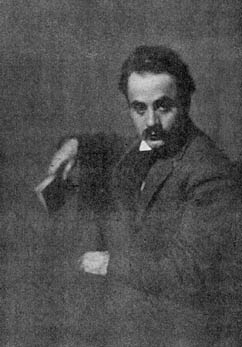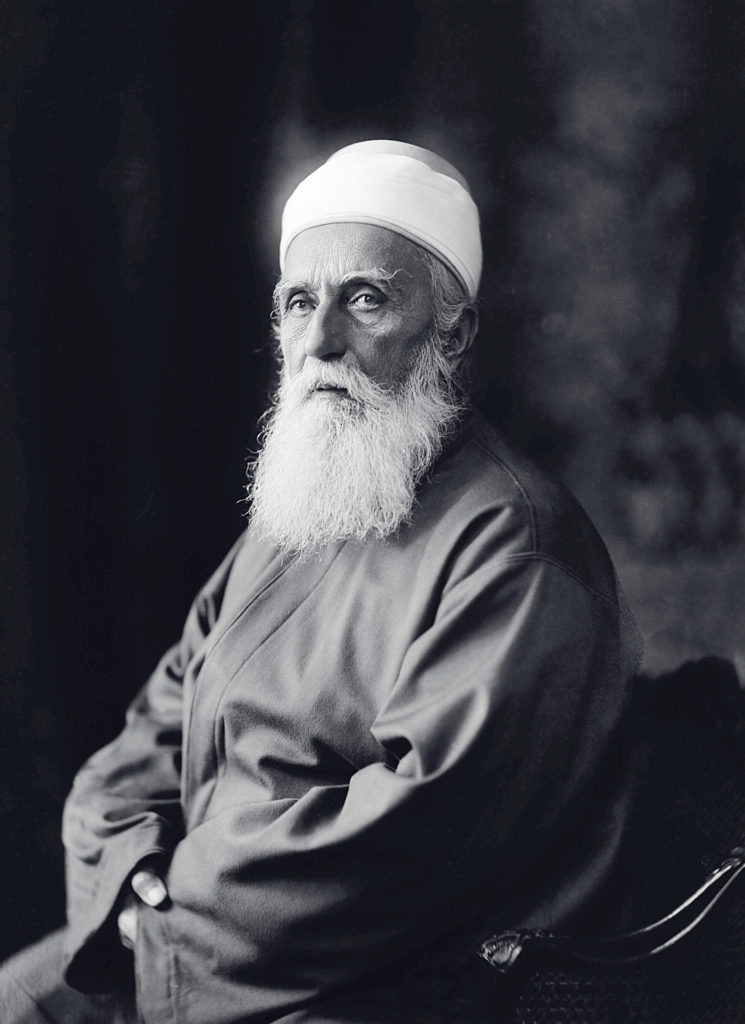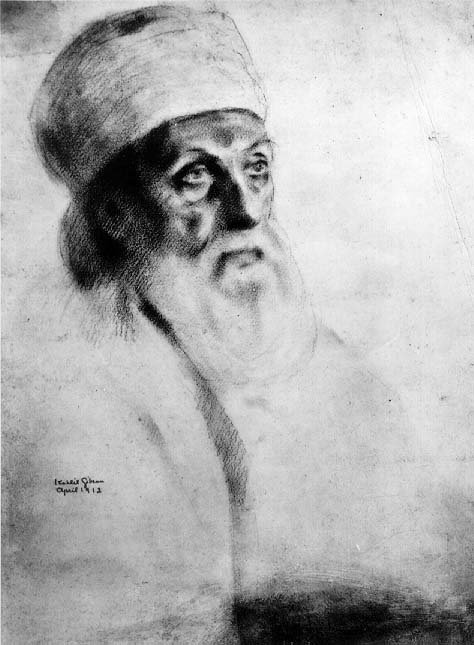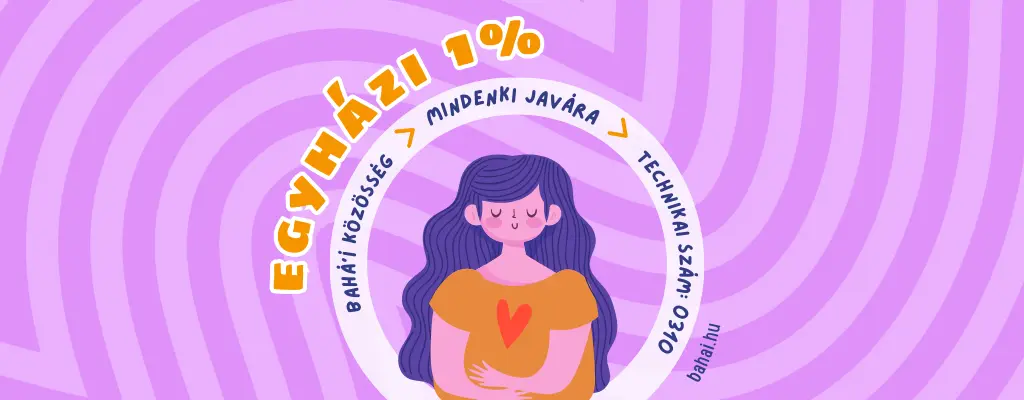Ki ihlette Kahlil Gibran művészetét?
Juliet Thompson emlékezése Kahlil Gibran-ra
Ebben a beszámolóban Marzieh Gail, bahá’í tudós meséli el Juliet Thompson festőművész emlékeit a világszerte ismert költő, író és grafikusművész, Kahlil Gibrannal kötött barátságáról – különösképpen arról, hogy Bahá’u’lláh írásainak eredeti nyelven való olvasása, valamint a Mester, ’Abdu’l-Bahá jelenlétében töltött pillanatok hogyan is befolyásolták Kahlil Gibran munkáját.
„[Kahlil Gibran] biztosan mondta nekem, hogy ’Az ember fia’ c. könyvet ’Abdu’l-Bahá ihlette.”
„…Sok éven keresztül Juliet és Daisy Pumpelly Smythe, ugyancsak egy művész, egy házban lakott Greenwich Village-ben a Nyugati 10. utca 48 szám alatt. Otthonukat különböző nemzetiségű, fajtájú és vallású emberek híres találkozóhelyévé tették; a látogatások és fireside-ok szinte folyamatosak voltak… Juliet 1943. április 6-án az első emeleten lévő műtermében osztotta meg ezen emlékeket Kahlil Gibranról velem és néhány másik vendéggel…”
„[Kahlil Gibran] az utca másik oldalán lakott, az 51 szám alatt. Egy arab újságon dolgozott, de mellette festett és írt is. Az első években minden rendben volt az egészségével. Később azonban szörnyen lelombozódott a rákja miatt. Negyvenkilenc évesen halt meg. Tudta, hogy élete túlságosan is hamar fog véget érni…A rajzai sokkal szebbek voltak, mint a festményei. Igen elmosódott, szinte a semmibe vesző dolgok voltak ezek – rejtelmesek és tovatűnők. Igen poétikusak.”
„Kahlil mindig azt mondta, hogy én voltam az első barátja New Yorkban. Nagyon jó és közeli barátok lettünk, és minden könyvét – ‘Az őrült ember’, ‘A hírnök’, ‘Az ember fia’, ‘A próféta’ – kéziratból olvasva hallottam. Mindig odaadta nekem a könyveit. A legjobban A próféta tetszett… elmondta nekem, hogy egész végig ’Abdu’l-Bahára gondolt, s hogy ’Abdu’l-Baháról mintegy központi alakról fog egy másik könyvet is írni kortársaival beszélgetvén. Meghalt, még mielőtt megírhatta volna. Biztosan mondta nekem, hogy ‘Az ember fiát’ ‘Abdu’l-Bahá ihlette meg.”

Kahlil Gibran, Fénykép megjelent al-Funun 1, no. 1 (April 1913) Forrás: http://www.al-funun.org/al-funun/images/gibran.html Wikimedia Commons
„Magas, finom hangja volt, és majdhogynem egy félénk, visszafogott modora, amíg ki nem tört belőle valami mennydörgő dolog. Nem tudom, hogy hogyan is írhatnám le őt, hacsak nem úgy, hogy Charlie Chaplin szakasztott mása volt. Ezt mindig is mondtam neki, ami igazán kihozta a sodrából.”
„Hogyan is lépett kapcsolatba Gibran a Bahá’í Üggyel? Őszintén elmesélem nektek a történetet, úgy ahogy volt. Siettem, hogy elmondjam neki – ő pedig figyelt. Kezébe került Bahá’u’lláh néhány arab nyelvű írása. Azt mondta, hogy az a legfantasztikusabb irodalom, ami valaha is íródott… s hogy egyetlen arab nyelvű írás sem ér fel Bahá’u’lláh arab nyelvhasználatához.
„Amerikai üzleti öltözetet viselt; dús, hullámos haja volt… egy idő után elmondtam neki, hogy jön a Mester. Megkért, hogy járjak közben a Mesternél s kérjem meg, hogy megörökíthesse Őt. A Mester egy óra hosszát adott neki egy reggelen 6 óra 30 perckor. Nagyon kifejező, kimagasló fejet alkotott… nagy erővel átitatva a vállakig. Csodálatos ragyogás az arcon…”
„Nagyon szerény és visszavonult volt a személyes életében. Még sohasem találkozott a Mesterrel annak előtte, és ezzel kezdődött a barátsága. Egyszerűen csodálta a Mestert. Mindig Vele volt, amikor csak tehette. Átjött ebbe a házba, hogy találkozhasson a Mesterrel. Bostonban is gyakran töltötte együtt az időt a Mesterrel. De mindez olyan homályos, hisz oly régen történt…

A Mester, ‘Abdu’l-Bahá, aki inspirálta Kahlil Gibran művészt, költőt és írót. (c) Bahá’í Nemzetközi Közösség media.bahai.org
„Nagy, tragikummal teli barna szemek. A szem nagyon fontos volt az arcán. A homloka igen magas volt, és majdhogynem kócos fekete haja. Alacsony, vékony… érzékeny szája enyhén lefele görbült. Egy nagyon szomorú ember, akinek megvolt az oka rá. Kis fekete bajusszal, mint Charlie Chaplin.”
„Évekkel később, ’Abdu’l-Bahá elhunyta után Kahlil Gibran egy filmvetítésen vett részt ’Abdu’l-Baháról. Gibran felkelt, hogy beszéljen, könnyezve magasztalta ’Abdu’l-Bahá emelkedett jellemét, és sírva hagyta el a helyszínt.”
Részlet: a World Order c. bahá’í magazinból, 1978., 12 köt., 4. sz., 29-31. old

Kahlil Gibran rajza ‘Abdu’l-Baháról, aki Kahlil Gibran műveit ihlette. (c) Bahá’í Nemzetközi Hírszolgálat news.bahai.org
Who inspired Kahlil Gibran?
Juliet Thompson Remembers Kahlil Gibran
Artist Juliet Thompson, one of the early American believers, spent many hours in the presence of ‘Abdu’l-Bahá. In this account Marzieh Gail, a Bahá’í scholar tells the memories of Juliet Thompson about her friendship with Kahlil Gibran, world renowned poet, writer and artist, particularly how reading the writings of Bahá’u’lláh in their original language and attaining the presence of the Master, ‘Abdu’l-Bahá influenced Gibran’s work.
“[Kahlil Gibran] told me definitely that [the book] ‘The Son of Man’ was influenced by `Abdu’l-Baha.”
… For many years Juliet and Daisy Pumpelly Smythe, also an artist, shared a house in Greenwich Village, at 48 West 10th Street. They made their home a famous gathering place for people of many races and religions; and visits there, and fireside meetings, were almost continual… … It was on April 6, 1943, in her studio-room, upstairs at the front of the house, that Juliet shared with me and a few other guests, these memories of Kahlil Gibran…
“[Kahlil Gibran] lived across the street from here,” said Juliet Thompson, “at 51 West 10th. He…worked on an Arab newspaper, [but was] free to paint and write. His health was all right in the early years. He was terribly sad in the later years, because of cancer. He died at forty-nine. He knew his life was ending too soon. His drawings were more beautiful than his paintings. These were very misty, lost things–mysterious and lost. Very poetic.”
“Kahlil always said I was his first friend in New York. We became very, very great friends, and all of his books—‘The Madman’, ‘The Forerunner’, ‘The Son of Man’, ‘The Prophet’–I heard in manuscript. He always gave me his books. I liked ‘The Prophet’ best…. he told me that he thought of `Abdu’l-Bahá all through. He said that he was going to write another book with `Abdu’l-Bahá as the center and all the contemporaries of `Abdu’l-Bahá speaking. He died before he wrote it. He told me definitely that [the book] ‘The Son of Man’ was influenced by `Abdu’l-Bahá. ”
“He wrote his books in the studio across the street. Then he would call me up and say come over and hear a chapter. He was from an old Syrian family. His grandfather was one of the Bishops…He had hundreds of followers. He kept that place closed to all except his intimate friends and his work.”
“He had a high, delicate voice and an almost shyly modest manner, until he came out with something thundering. I don’t know how to describe him except to say he was the spitting image of Charlie Chaplin. I used to tell him so. It made him frightfully mad.”
“How Gibran got in touch with the Baha’i Cause: I’ll just frankly tell you the story, just as it was. I hastened to tell him he listened. He got hold of some of the Arabic of Bahá’u’lláh. He said it was the most stupendous literature that ever was written… that there was no Arabic that even touched the Arabic of Bahá’u’lláh.
“He wore American business clothes. Had lots of black hair, wavy. Time passed. I told him the Master was coming. He asked me if I would request the Master to sit for him. The Master gave him one hour at 6:30 one morning. He made an outstanding head… Great power through the shoulders. A great radiance in the face… ”
“He was very modest and retiring in his personal life. He’d never met the Master before, and that began his friendship. He simply adored the Master. He was with Him whenever he could be. He would come over here to this house (48 West 10th) to see the Master. In Boston, he was often with the Master. All that’s sort of blurred because it’s so long ago… ”
“…The Master went away and Kahlil settled down into writing his books. But he often talked of Him, most sympathetically and most lovingly. Poor Kahlil! The end isn’t so good. I was away. When I came back he was very sick. He asked me if I wouldn’t come every day to see him. He was in bed. These were his last days. I want to give you all I can while I can. He would pour out the story of his life… ”
“Large, tragic brown eyes. The eye was very important in his face. His forehead was broad-very high-very broad, and he had almost a shock of black hair. Short, slender, five foot two or three. Very sensitive mouthdrooped a little at the corners. Very sad man who had a reason for it. Little black moustache, like Charlie Chaplin. ”
„Years later, after the death of `Abdu’l-Bahá, there was a viewing of the movie recording of `Abdu’l-Bahá – Gibran rose to talk and in tears, proclaimed an exalted station of `Abdu’l-Bahá and left the event weeping.”
Excerpts from: World Order Baha’i Magazine, Vol. 12, Number 4, 1978 Pages 29-31

1912-ben találkozott Kahlil Gibran ‘Abdu’l-Bahával, amikor áprilistól decemberig Észak-Amrikában utazott. Középen ‘Abdu’l-Bahá bahá’í-okkal (Lincoln Park, Chicago, Illinois, USA) (c) Bahá’í Nemzetközi Közösség media.bahai.org


1053 Budapest, Ferenciek tere 3. II. em./4.
Mobil: +36306542787
Telefon: +3612664004 | Email: info@bahai.hu




